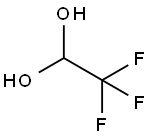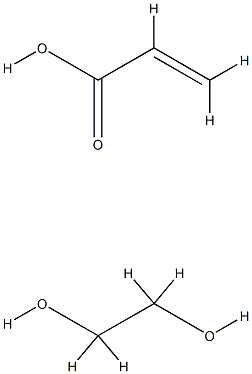Triethylene glycol diacrylate
- CAS NO.:1680-21-3
- Empirical Formula: C12H18O6
- Molecular Weight: 258.27
- MDL number: MFCD00039822
- EINECS: 216-853-9
- SAFETY DATA SHEET (SDS)
- Update Date: 2025-07-16 09:54:05

What is Triethylene glycol diacrylate?
The Uses of Triethylene glycol diacrylate
Triethylene glycol diacrylate is a cross-linking acrylate monomer for use in coatings, adhesives, and printing plates of the photoprepolymer type.
General Description
Triethyleneglycol dimethacrylate is used as an intermediate product for polymer synthesis in the chemical industry.
Safety Profile
Moderately toxic by ingestion and skin contact. Questionable carcinogen with experimental tumorigenic data. Severe skin and eye irritant. When heated to decomposition it emits acrid smoke and irritating fumes.
Properties of Triethylene glycol diacrylate
| Melting point: | 125℃/2mm |
| Boiling point: | 266°C |
| Density | 1,1 g/cm3 |
| refractive index | n20/D1.464 |
| Flash point: | >100°C |
| storage temp. | 2-8°C |
| form | liquid |
| Stability: | Stable. Combustible. Incompatible with strong oxidizing agents. |
| EPA Substance Registry System | Triethylene glycol diacrylate (1680-21-3) |
Safety information for Triethylene glycol diacrylate
| Signal word | Warning |
| Pictogram(s) |
 Exclamation Mark Irritant GHS07 |
| GHS Hazard Statements |
H315:Skin corrosion/irritation H317:Sensitisation, Skin H319:Serious eye damage/eye irritation |
| Precautionary Statement Codes |
P261:Avoid breathing dust/fume/gas/mist/vapours/spray. P264:Wash hands thoroughly after handling. P264:Wash skin thouroughly after handling. P272:Contaminated work clothing should not be allowed out of the workplace. P280:Wear protective gloves/protective clothing/eye protection/face protection. P302+P352:IF ON SKIN: wash with plenty of soap and water. P305+P351+P338:IF IN EYES: Rinse cautiously with water for several minutes. Remove contact lenses, if present and easy to do. Continuerinsing. |
Computed Descriptors for Triethylene glycol diacrylate
| InChIKey | INQDDHNZXOAFFD-UHFFFAOYSA-N |
New Products
Indole Methyl Resin tert-butyl 9-methoxy-3-azaspiro[5.5]undecane-3-carboxylate Boc-His(Boc)-OH 2-CTC Resin 4-Chloro-7-tosy1-7Hpyrrolo[2,3-d]pyrimidine 5,7-Dibromo-1H-indole 2,5-dichloro-N-hydroxy-4,6-dimethylpyridine-3-carboximidamide 2,2-Dimethoxy-7-azaspiro[3.5]nonane hydrochloride 4-chloromethyl-5-methyl-1,3-dioxol-2-one (DMDO-Cl) R-2-BENZYLOXY PROPIONIC ACID 1,1’-CARBONYLDIIMIDAZOLE 1,1’-CARBONYLDI (1,2-4 TRIAZOLE) N-METHYL INDAZOLE-3-CARBOXYLIC ACID 4-((2-hydroxyethyl)thio)benzoic acid 1-(TERT-BUTOXYCARBONYL)-2-PYRROLIDINONE Methyl 6-methylnicotinate 3-Pyridineacrylic acid tert-Butyl carbazate TETRAHYDRO-2H-PYRAN-3-OL 2-((4-morpholinophenylamino) (methylthio) methylene) malononitrile 3-(4-morpholinophenylamino)-5-amino-1H-pyrazole-4-carbonitrile 2,4-dihydroxybenzaldehyde 1,3-Diethyl-1,3-Diphenylurea Methyl 2-methylquinoline-6-carboxylateRelated products of tetrahydrofuran








You may like
-
 Tri(ethyleneglycol) diacrylate CAS 1680-21-3View Details
Tri(ethyleneglycol) diacrylate CAS 1680-21-3View Details
1680-21-3 -
 Pyridine 99.5% HPLC /UV SpectroscopyView Details
Pyridine 99.5% HPLC /UV SpectroscopyView Details
110-86-1 -
 Guanine , 99%View Details
Guanine , 99%View Details
73-40-5 -
 Piperazine Spot supply, best priceView Details
Piperazine Spot supply, best priceView Details
110-85-0 -
 Dibutyl PhthalateView Details
Dibutyl PhthalateView Details
84-74-2 -
 Imidazole Spot supply, competitive priceView Details
Imidazole Spot supply, competitive priceView Details
288-32-4 -
 Octadecyl 3-(3,5-di-tert-butyl-4-hydroxyphenyl)propionate 98% (GC)View Details
Octadecyl 3-(3,5-di-tert-butyl-4-hydroxyphenyl)propionate 98% (GC)View Details
2082-79-3 -
 Thiourea 99% ARView Details
Thiourea 99% ARView Details
62-56-6
Statement: All products displayed on this website are only used for non medical purposes such as industrial applications or scientific research, and cannot be used for clinical diagnosis or treatment of humans or animals. They are not medicinal or edible.
